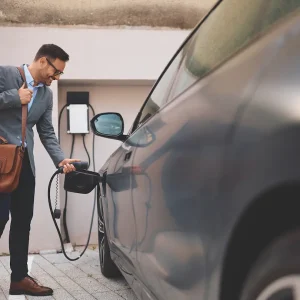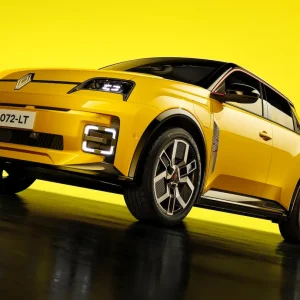They have fewer moving parts and there are fewer components to replace. Does that sound familiar? Probably.
It is not wrong. Electric vehicles (EVs) certainly do have fewer wearable and replaceable bits and pieces than ICE equivalents, and on that basis alone, they are certainly cheaper to run. The problem with that statement is that it is very general, and it does not account for the many nuances that play into service, maintenance and repair (SMR).
Analysis of real-world fleet data by Epyx, published in October 2022, revealed circumstances in which EVs fare both better and worse in similar types of usage, along with variations by model.
We reported the story in our November issue, but the figures are worth a second look. The firm compared a series of equivalent electric and ICE vehicles across three metrics: the number of visits to service outlets, the number of days off the road due to SMR issues, and workshop costs including tyres and repairs.
The first example was a common fleet hatchback on a three-year, 25-30,000-mile cycle. The EV averaged 5.7 visits to service outlets, 3.2 days off the road, and workshop costs of £431. Across the same three metrics, the petrol version averaged five service visits, 4.5 days off the road and workshop costs of £412. Epyx said there were “no obvious EV benefits” in this case.
The second comparison was a “large prestige SUV from a major manufacturer – one petrol and one a purpose-built EV” at two years old and 20-30,000 miles. The EV averaged 3.4 days off the road, with workshop costs of £645 and 4.1 service visits. The petrol averaged 4.9 days off the road, workshop costs were £996 and service visits were exactly four days. The firm described the EV as “superior” in the former two areas, and both models as “comparable” in the latter.
The final example was a van in electric and diesel guises over a three-year, 25-30,000-mile cycle. The EV had 5.7 service visits, 2.2 days off the road and workshop costs of £239. The diesel had “comparable” service visits of five days and 2.9 days off the road, but workshop costs of “more than double” at £522.
The firm stipulated that the number of true equivalent EV and ICE vehicles is relatively small. Out of more than four million company cars, vans and trucks on its 1link Service Network SMR platform, it said there were “only around 170” EVs of ages and mileages for a true comparison.
In an interview with Business Car, Epyx’s strategy director, Charlie Brooks, elaborated on the issue. He believes that fleets should not conclude that EVs will be cheaper to run in every case and points out that there are nuances according to factors such as age and application.
“To assume all your vehicles, when you’ve transitioned to EVs, are going to cost 35% less, I think, is very dangerous. We have some dashboards that show the average repair value of vehicles, and for [certain EVs] it’s relatively low up to about 45,000 miles. Then, suddenly after that, when it has a repair, it’s a very expensive repair. Whereas for ICE vehicles, you kind of see the average repair value increasing gradually over time.”
He suggested that early technical issues plus the differing characteristics of individual models could contribute to maintenance time and costs.
“I believe, from a pure SMR perspective, they [EVs] will cost less, but I don’t believe that is necessarily the case across the board. At the moment, we [also] have a number of teething problems, where vehicles are going in a little bit more frequently than you might expect.
“I’m loath to say that this is the future of EVs. this is more what we’ve found to date, because I still feel it’s going to vary significantly by make and model.”
Some experts believe that EVs represent such a small amount of the vehicle parc that it is too soon to draw broad conclusions about their maintenance habits and costs, chiefly due to the tiny amount of available SMR data.
“You would probably look at Tesla and say ‘that’s changed the game,’ and we have obviously seen the arrival of a lot of EVs over the last 12 months or so,” says Auto Trader’s head of TCO, Mark Jowsey, but prior to the arrival of Tesla, the majority of EV ownership was private and low-mileage. Even though the Leaf’s been around a long time, the bulk of Leafs were actually in private ownership, rather than corporate buyers.
“Although I would argue that we’ve had EVs for 10-12 years with Leaf, the scale of information is a bit flaky, and the other part of it is that some of the powertrain warranties seem to differ. There is not enough evidence to be really objective about it.”
Others argue that EVs are cheaper to maintain, including fellow SMR specialist Fleet Assist, which manages 850,000 cars and vans. Battery-EVs accounted for 9% of its jobs in 2022 and for those carried out between January and October, average labour times were 33% less than for ICEs. Over the same period, the cost of EV parts, labour itself, and fluids were reportedly 51%, 26% and 39% lower.
The company added that “average BEV mileages are still tracking lower than the equivalent ICE or hybrid vehicles,” with one, two and three-year-old EVs recording 19%, 21%, and 14% lower mileages respectively at the time of their services.
“The overriding position is that BEVs are shining through as cheaper on overall SMR costs,” said managing director Vincent St Claire, who added that both labour time and the types/cost of the most common replacement parts were weighted in favour of EVs. For ICE vehicles they were pads, discs, bulbs, and oil and pollen filters. For EVs, they were collectively cheaper items: pollen filters, bulbs, key fob batteries, wipers, and brake fluid.
The average age of EVs on Fleet Assist’s books was 1.6 years, compared with 4.6 years for ICE vehicles. St Claire conceded that this would make a difference but claimed overall SMR costs would still be less for EVs – to a point.
“The general mileage profile will make BEVs look better as an average comparison today, absolutely, but there still is an underlying trend that you can’t get away from – even if you were to take a one-year-old BEV and ICE vehicle, you’ll find that the labour times are less, and a smaller number of parts are required.
“Where they [EVs] will potentially [be] costlier is where a[n older] vehicle may have had two sets of brake pads during its life and a set of discs.”
Higher tyre prices and wear rates can offset the allegedly lower cost of EV maintenance. Steve Chambers, senior editor for SMR at Cap HPI, explained that EV rubber is, “generally bigger, therefore more expensive and wears more quickly, but it is offset by the fact that we could, as a broad brush, say the service component is 50% [cheaper].”
Data from Epyx shows that electric vehicle tyres typically cost around £120 more than those of an equivalent ICE model, and that cost can increase. “We know for a fact that, across all the tyre data that we do, EVs, on average, have a tyre that is one inch larger than their ICE equivalent,” says Brooks, “that extra inch that you add to a tyre’s diameter costs about £30 on each tyre. There’s a greater and greater demand to have larger tyres on these vehicles, and they kind of start off at £30, then they start getting exponentially more expensive at the higher end.”
In an interview with Business Car in November 2021, Michelin’s technical manager, Brian Porteous, said some EVs’ range could be blunted by up to 20% if they were fitted with non-OEM-spec tyres. After that article was published, we were contacted by an EV specialist at a major leasing company, who explained that Michelin’s own representatives had claimed EV range would not be impacted, regardless of the tyre. It is a case study in how difficult it can be for fleets to get a true picture of electric vehicle maintenance costs.
Chambers says the comparative absence of wearable components swings the advantage back in EVs’ favour, but he also questions whether a relatively low-mileage retail buyer would notice the difference if they stuck to their vehicle’s tyre replacement schedule.
“When we look at other items, like timing belts, water pumps, alternators – they are never going to be an issue for battery-electric vehicles.
“There are all sorts of things at play but, fundamentally, EVs do cost less to run. If you are a retail customer, though, the question is whether or not you’d feel it that much if you are doing very low mileage. If it’s a case of ‘I’ve got to replace two tyres this year,’ do you look back in 24 months and say, ‘I replaced them in the first 12 months, and this is the second time I’ve had to do it’?”





